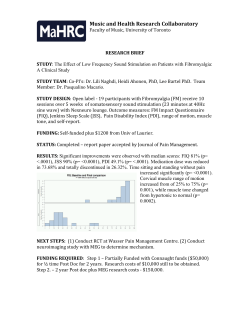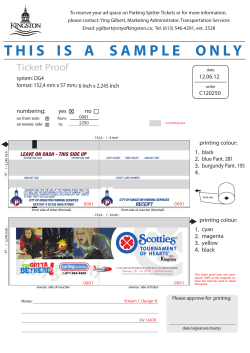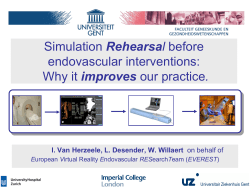
Communication system (pdf 47KB)
TN 109: 2014 For queries regarding this document standards@asa.transport.nsw.gov.au www.asa.transport.nsw.gov.au Technical Note TN 109: 2014 Issued date Effective date 19 December 2014 19 December 2014 Subject: Superseded standard – Minimum Operating Standards for Rolling Stock This Technical Note is to advise that the RailCorp engineering standard ESR 0001 Minimum Operating Standard for Rolling Stock has been superseded by ASA standard T HR RS 00000 ST. The standard has been superseded as follows: • ESR 0001 – 000 superseded by T HR RS 00000 ST • ESR 0001 – 100 superseded by T HR RS 00100 ST • ESR 0001 – 200 superseded by T HR RS 00200 ST • ESR 0001 – 300 superseded by T HR RS 00300 ST • ESR 0001 – 400 superseded by T HR RS 00400 ST • ESR 0001 – 500 superseded by T HR RS 00500 ST • ESR 0001 – 600 superseded by T HR RS 00600 ST • ESR 0001 – 700 superseded by T HR RS 00700 ST • ESR 0001 – A1 superseded by T HR RS 00811 ST • ESR 0001 – A2 superseded by T HR RS 00812 ST • ESR 0001 – A3 superseded by T HR RS 00813 ST • ESR 0001 – A4 superseded by T HR RS 00814 ST • ESR 0001 – A5 superseded by T HR RS 00815 ST • ESR 0001 – A6 superseded by T HR RS 00816 ST • ESR 0001 – A7 superseded by T HR RS 00817 ST A3929638 © State of NSW through Transport for NSW Asset Standards Authority Page 1 of 2 TN 109: 2014 • ESR 0001 – B superseded by T HR RS 00820 ST • ESR 0001 – C superseded by T HR RS 00830 ST • ESR 0001 – D superseded by T HR RS 00840 ST • ESR 0001 – E superseded by T HR RS 00850 ST • ESR 0001 – F superseded by T HR RS 00860 ST • ESR 0001 – G superseded by T HR RS 00870 ST • ESR 0001 – H superseded by T HR RS 00880 ST • ESR 0001 – I superseded by T HR RS 00890 ST The ASA Minimum Operating Standards for Rolling Stock can be found in the following location on the ASA website under rolling stock: http://www.asa.transport.nsw.gov.au/ts/asa-standards#rolling-stock Authorisation Technical content prepared by Checked and approved by Interdisciplinary coordination checked by Authorised for release Name Jakub Zawada Michael Uhlig David Spiteri Graham Bradshaw Position Principal Engineer, Rolling Stock Access Integrity Lead Engineer, Rolling Stock Chief Engineer Rail Principal Manager Network Standards & Services Signature A3929638 © State of NSW through Transport for NSW Asset Standards Authority Page 2 of 2 ESR 0001-F RSU APPENDIX F COMMUNICATION SYSTEM Version 1.0 Issued June 2010 Owner: Chief Engineer Rolling Stock Approved by: Stephen White, Technical Specialist Rolling Stock Performance Standards, Rolling Stock Access Integrity Authorised by: Michael Uhlig, Manager Rolling Stock Access Integrity Disclaimer This document was prepared for use on the RailCorp Network only. RailCorp makes no warranties, express or implied, that compliance with the contents of this document shall be sufficient to ensure safe systems or work or operation. It is the document user’s sole responsibility to ensure that the copy of the document it is viewing is the current version of the document as in use by RailCorp. RailCorp accepts no liability whatsoever in relation to the use of this document by any party, and RailCorp excludes any liability which arises in any manner by the use of this document. Copyright The information in this document is protected by Copyright and no part of this document may be reproduced, altered, stored or transmitted by any person without the prior consent of RailCorp. UNCONTROLLED WHEN PRINTED Page 1 of 4 Engineering Standard Superseded by T HR RS 00860 ST Engineering Standard Rolling Stock Superseded by T HR RS 00860 ST RailCorp Engineering Standard — Rolling Stock RSU AppendiX F Communication system ESR 0001-F Document control Revision Date Summary of change 1.0 June 2010 Reformatted and renumbered ESR 0001-F Summary of changes from previous version Summary of change Section NOTE – If the final document is small enough for the ‘Contents’ and ‘Document control’ to fit on one page remove the page break between the existing pages 2 and 3. HOWEVER if the ‘Document control’ page carries over to a second page separate pages must be used for ‘Contents’ and ‘Document control’ Contents 1 Introduction........................................................................................................................................3 1.1 Copper communication cables..................................................................................................3 1.1.1 Cable construction and installation. .............................................................................3 2 Railway radio systems......................................................................................................................3 3 Interference tests ..............................................................................................................................4 © Rail Corporation Issued June 2010 UNCONTROLLED WHEN PRINTED Page 2 of 4 Version 1.0 Superseded by T HR RS 00860 ST RailCorp Engineering Standard — Rolling Stock RSU AppendiX F Communication system 1 ESR 0001-F Introduction Vehicles and trains shall generate no energy capable of interfering with the RailCorp signalling and communications equipment. 1.1 Copper communication cables Copper communications cables are primarily used for local distribution of services from nodes fed by optic fibre cables. These services include both telephone and digital data services. Frequencies in use range from D.C. to 2 MHz plus harmonics. 1.1.1 Cable construction and installation. New cable is of unit twin, jelly filled construction, with a moisture barrier sheath but no screening. The capacitance unbalance to earth for these cables is typically less than 1%. There is a small (and decreasing) amount of screened quad cable still in use. In the Sydney metropolitan area many of the cable routes are above ground in troughing and drawings are not always available. Cable route plans of buried cables are available if required. Cable routes may be anywhere within (and at times are outside) the railway easement, but are typically close to the boundary fence line on one or both sides of the easement. 2 Railway radio systems Radio systems to be considered from an interference viewpoint include MetroNet, WB, GRN, Police Radio, Station Radio and Worksite Radio. MetroNet operates in the 403 – 420 MHz band on 12.5kHz spaced analogue channels. WB is a simplex single analogue channel system operating at 450.05 MHz. GRN operates in the 403 – 420 MHz band on 12.5kHz spaced analogue channels, migrating to digital. Police Radio operates in the 450 – 470 MHz band on 12.5kHz spaced analogue channels, migrating to digital. Station Radio operates in the 400 – 470 MHz band on 12.5kHz spaced analogue channels. Worksite Radio operates in the 450 – 470 MHz band on 12.5kHz spaced analogue channels. © Rail Corporation Issued June 2010 UNCONTROLLED WHEN PRINTED Page 3 of 4 Version 1.0 Superseded by T HR RS 00860 ST RailCorp Engineering Standard — Rolling Stock RSU AppendiX F Communication system 3 ESR 0001-F Interference tests Type tests shall be conducted using the train set to measure vehicle generated disturbance effects in signalling track circuits, telecommunication cables and lineside telecommunications systems. Refer to ESR 0001 – 200, Section 33 (RSU 296) Signal and Communication Interference Tests and to RailCorp Signalling Standard ESG 006 Rolling Stock Signalling Interface Requirements. © Rail Corporation Issued June 2010 UNCONTROLLED WHEN PRINTED Page 4 of 4 Version 1.0
© Copyright 2025









